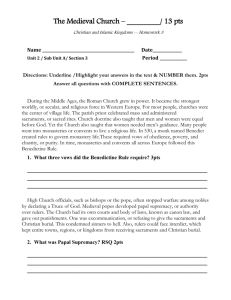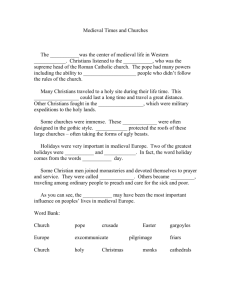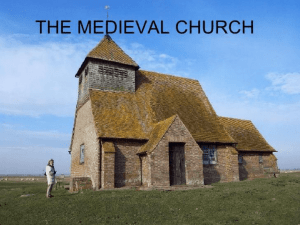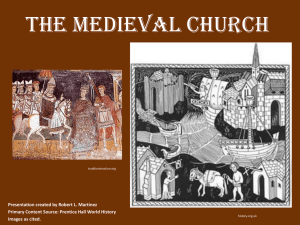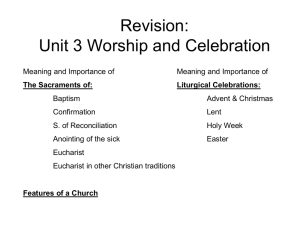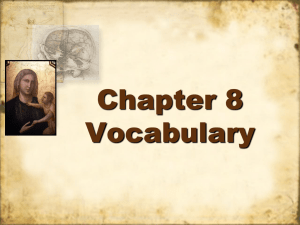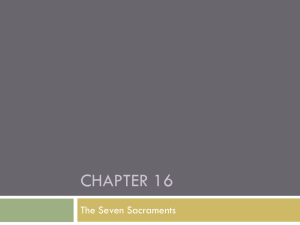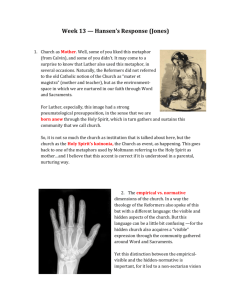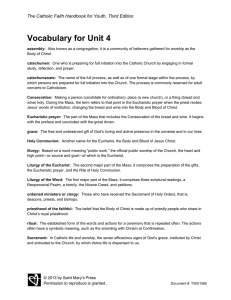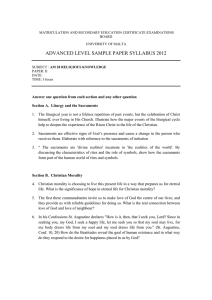Benedictine Rule - Arapahoe High School
advertisement
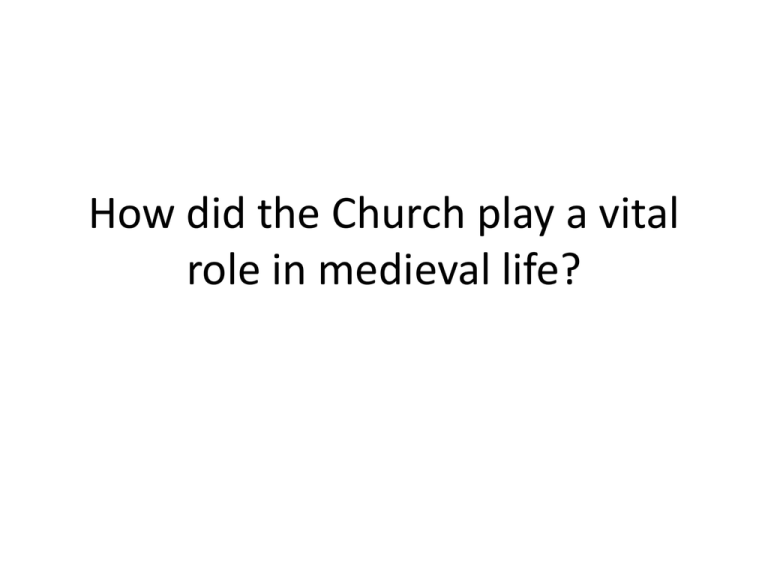
How did the Church play a vital role in medieval life? The Church Dominates Medieval Life • Priest in each village was often the only contact people had with the Church – Celebrated the mass and sacraments – Explained Church teachings and the Bible (was in Latin) – Some ran schools in the later Middle Ages • Life was marked by important events: birth, illness, marriage, death Church involvement • Church was social center, Church calendar very important (Gregorian calendar, 1582) • Men and women were equal in Church doctrine, but – Church set minimum age of marriage for women – Men were fined for hurting their wife – Women often punished more harshly for similar offenses Monasteries and Convents • What are they? • Benedictine Rule – – – – Created around 530 A system of rules that regulated monastic life 3 vows: obedience, poverty, chastity Day was divided for worship, work, and study (did much to help advance farming methods and the economy • Provided basic health and educational services • Helped keep learning alive—libraries, copying texts • Many women entered convents because of opportunities for learning Church Power Grows • Pope = leader of Western Christian Church, head of the entire Church hierarchy • Papal supremacy- authority over all secular rulers (this would included kings and emperors) • Church leaders were usually highly educated, & were appointed to gov’t positions by feudal rulers • Doing good deeds, believing in Christ, and participating in the sacraments were all required to avoid hell. – Only the Church could administer the sacraments – Consequences? • Canon law = Church law – Disobeying could result in excommunication or worse, interdict (excluded an entire town or kingdom from the sacraments and Christian burial). • Tried to stop warfare among nobles, called the Truce of God Corruption and Reform • Success = problems – Some monks and nuns had possessions of their own – Some priests lived luxuriously • Calls for reform: – Cluny, France, 900s, Abbot Berno revived the Benedictine Rule and many other monasteries followed – Rome, 1073, Pope Gregory VII pushed to limit secular influence on the Church and outlawed marriage for priests and selling of Church offices (simony) • Friars traveled and taught to the poor (groups like the Franciscans and Dominicans) Jews in Medieval Europe • Spain was center of Jewish culture—Muslim controlled, but all religions tolerated • 1000s- Jews began to be persecuted in W. Eur. – Blamed for disasters – Not part of parish structure, Christians suspicious – Excluded from land ownership and some occupations • Jews migrate to E. Eur. – Welcomed – Formed long-lasting communities Pilgrimage • A religious journey • European Christians journeyed to the Holy Land – Why the Holy Land? • Holy Land occupied by Seljuk Turks (fanatical Muslims) in the 11th century – Unfriendly to the Christians – Raided north and defeated a Byzantine army • Will be the cause of the 1st Crusade in 1095 To summarize:
